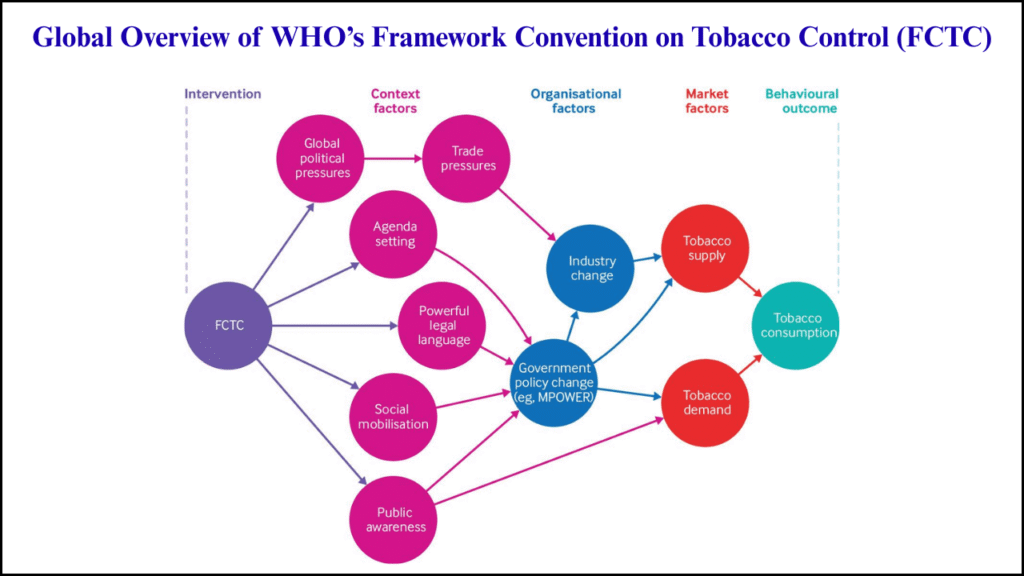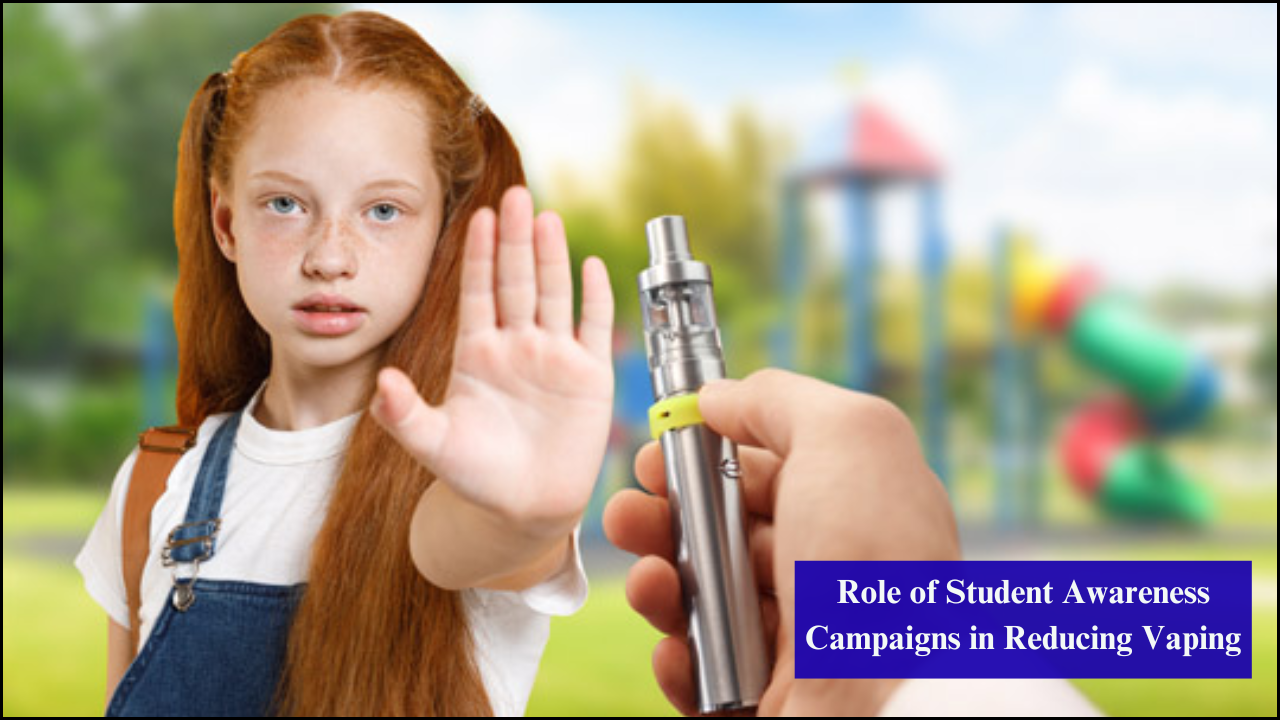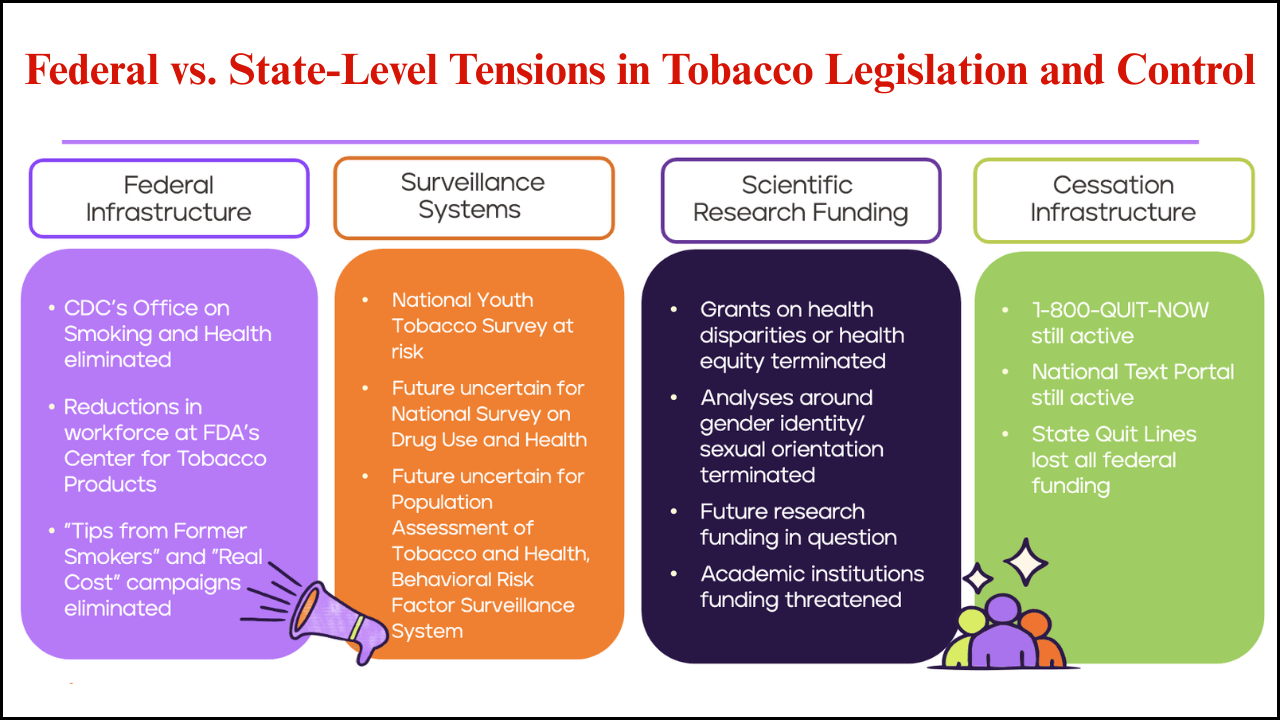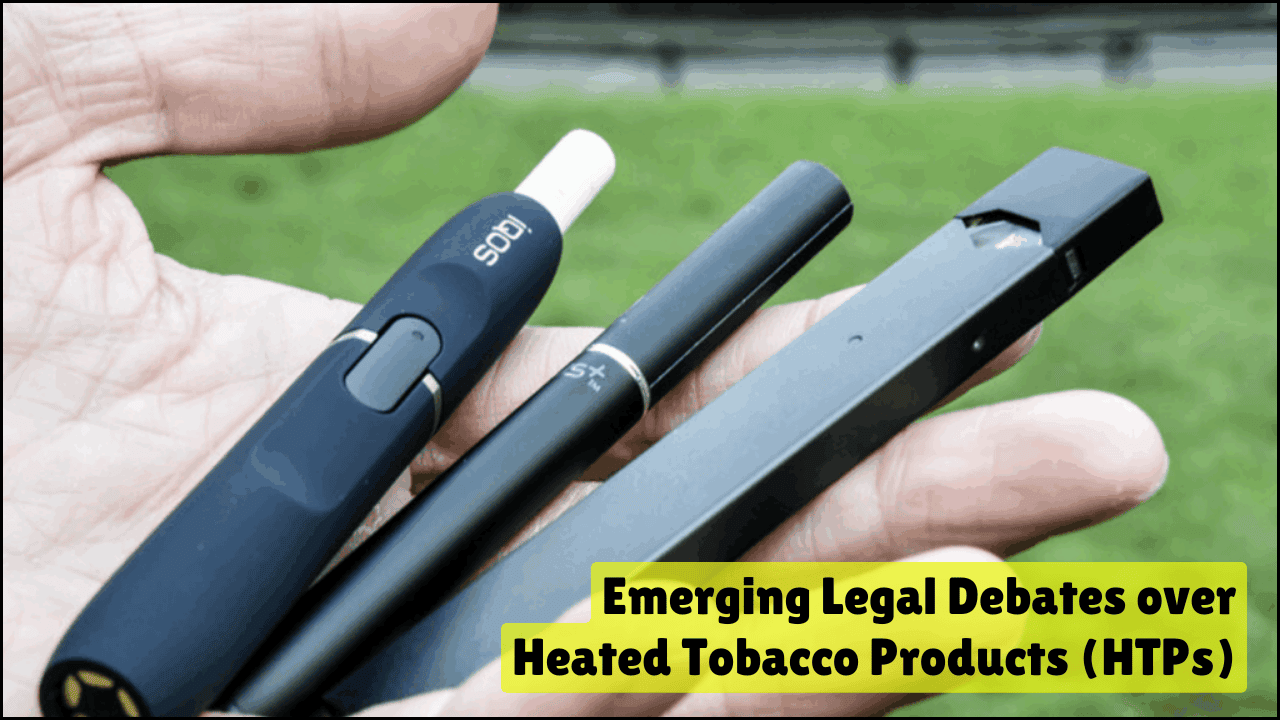
Tobacco consumption remains one of the largest preventable causes of death worldwide. A comprehensive international response was required to curb its impact on public health, which led to the creation of the World Health Organization’s Framework Convention on Tobacco Control (WHO FCTC). This treaty, adopted in 2003, represents the first global health agreement negotiated under the auspices of WHO. An overview of its principles, implementation, challenges, and global relevance highlights how this framework has reshaped the fight against tobacco-related harm.
Table of Contents
Background of the WHO FCTC
- Adoption took place on 21 May 2003 during the 56th World Health Assembly.
- The treaty entered into force on 27 February 2005 after ratification by 40 states.
- Recognition of tobacco as a global epidemic made it essential to take coordinated international measures.
- The purpose of FCTC was to reduce both the supply and demand of tobacco products through legal, educational, and economic strategies.
- FCTC today has 182 parties, making it one of the most widely embraced international treaties in public health.
Key Objectives of the WHO FCTC
- Protection of present and future generations from the health, economic, and environmental consequences of tobacco use.
- Reduction of demand by implementing taxation, advertising bans, packaging regulations, and awareness campaigns.
- Restriction of supply by monitoring trade, tackling illicit tobacco markets, and supporting alternative livelihoods for tobacco growers.
- Strengthening international cooperation in research, information exchange, and legal enforcement.
Core Obligations for Parties
- Implementation of tax and price measures to reduce tobacco consumption.
- Introduction of comprehensive bans on tobacco advertising, sponsorship, and promotion.
- Adoption of graphic health warnings covering at least 30% (preferably 50%) of tobacco packaging.
- Protection of policies from interference by the tobacco industry.
- Regulation of contents, disclosures, and sales of tobacco products.
- Monitoring of second-hand smoke exposure and establishing smoke-free public spaces.
- Support for cessation programs and healthcare systems for tobacco dependence treatment.
Major Provisions of the WHO FCTC
| Provision | Description | Expected Impact |
|---|---|---|
| Price & Tax Measures | Governments required to adopt higher excise taxes on tobacco products | Reduced affordability and consumption |
| Advertising & Promotion Ban | Comprehensive ban on all direct and indirect advertising | Lower exposure to pro-tobacco influence |
| Packaging & Labelling | Pictorial health warnings, plain packaging, and information on harmful effects | Increased awareness of health risks |
| Protection from Smoke | Public places, workplaces, and transport are to be smoke-free | Reduced exposure to second-hand smoke |
| Illicit Trade Control | Stronger monitoring, tracking, and border control mechanisms | Reduced illegal tobacco trade |
| Support for Farmers | Promotion of alternatives for tobacco growers and workers | Sustainable livelihood shifts |
| Industry Accountability | Preventing interference in public health policies | Transparent and independent regulation |
Global Implementation Progress
- More than 80% of FCTC parties have implemented some form of tobacco packaging and labeling regulations.
- Over 100 countries have enforced advertising bans on tobacco products.
- Introduction of smoke-free laws in public spaces has expanded significantly across Europe, Asia, and Latin America.
- Global cigarette consumption, although still high, has shown a declining trend since the adoption of the FCTC.
- Countries such as Australia, Uruguay, and the UK have become models by adopting plain packaging policies.
Challenges in Implementation
- Tobacco industry interference remains one of the greatest barriers, as companies use lobbying, litigation, and misinformation to block policies.
- Illicit tobacco trade undermines taxation policies and increases access, particularly in low-income regions.
- Economic dependency on tobacco farming continues in countries like Malawi, Zimbabwe, and parts of Asia, slowing the adoption of alternative livelihoods.
- Weak enforcement capacity in some countries limits effectiveness despite policy adoption.
- Health inequities lead to a higher burden of tobacco use in low- and middle-income countries where resources for cessation support are limited.
Success Stories and Remaining Gaps
| Country | Major Achievement | Current Gap |
|---|---|---|
| Australia | First to introduce plain packaging (2012) | Illicit trade monitoring challenges |
| Uruguay | Strict graphic health warnings covering 80% of packs | Legal battles with tobacco companies |
| UK | Strong taxation and advertising bans | Rising use of e-cigarettes among youth |
| India | Large pictorial warnings, bans on sale near schools | Weak enforcement of smokeless tobacco control |
| Brazil | Comprehensive smoke-free laws, advertising bans | Illegal trade remains a concern |
| Kenya | Strong public health campaigns | Resource limitations in cessation services |
Role of Civil Society and NGOs
- Advocacy groups played a significant role in negotiating the treaty and continue to monitor compliance.
- Global alliances like the Framework Convention Alliance (FCA) hold governments accountable for progress.
- Civil society organizations support public awareness campaigns and fight against the tobacco industry’s interference.
- Partnerships between NGOs and governments have strengthened monitoring systems and enforcement mechanisms.
Economic Dimensions of FCTC
- Increased taxation on tobacco products has led to higher government revenue, which can be reinvested in healthcare.
- Tobacco-related diseases account for billions in healthcare costs globally; FCTC reduces this burden.
- Transitioning farmers to alternative crops helps stabilize rural economies in the long term.
- Economic modeling shows that the comprehensive implementation of FCTC could save millions of lives and reduce global healthcare expenditure significantly.
Scientific and Research Contributions
- FCTC has encouraged stronger surveillance systems to track tobacco consumption trends.
- Research on second-hand smoke and its health effects has influenced stronger smoke-free laws.
- Studies on plain packaging show positive results in reducing the appeal among youth.
- Global sharing of epidemiological data allows comparison and informed policy decisions.
Future Directions of the WHO FCTC
- Stronger regulation of novel tobacco products such as e-cigarettes and heated tobacco devices.
- Expansion of international cooperation to address illicit trade and cross-border marketing.
- Investment in digital campaigns to counter online tobacco advertising.
- Promotion of equity-based interventions targeting vulnerable populations.
- Integration of FCTC goals with Sustainable Development Goals (SDGs) for broader global health progress.
Emerging Priorities for FCTC
| Priority Area | Focus | Global Relevance |
|---|---|---|
| Regulation of E-cigarettes | Policies on marketing, flavors, and age restrictions | Protecting youth from nicotine addiction |
| Tackling Illicit Trade | Advanced tracking and cross-border enforcement | Limiting revenue losses and illegal access |
| Alternative Livelihoods | Support for farmers shifting away from tobacco | Sustainable rural development |
| Digital Media Monitoring | Restrictions on online promotion | Adapting to modern communication platforms |
| Integration with SDGs | Aligning FCTC with poverty reduction, health, and environment goals | Holistic global development |
Impact on Global Public Health
- Decline in smoking prevalence has been noted in several high-income and middle-income countries since FCTC adoption.
- Awareness of tobacco-related harm has increased globally through health campaigns and packaging warnings.
- Protection of non-smokers from second-hand smoke has improved life expectancy and reduced disease burden.
- Strengthened international solidarity has created a unified voice against corporate influence in health matters.
Moving Forward
Global cooperation through the WHO Framework Convention on Tobacco Control has significantly reshaped public health policies around tobacco. Implementation of its provisions has saved lives, reduced consumption, and strengthened international accountability. However, challenges such as industry interference, illicit trade, and uneven enforcement remain persistent. Stronger collaboration, innovation, and commitment are essential to ensure that the vision of a tobacco-free future becomes a reality across all regions.






